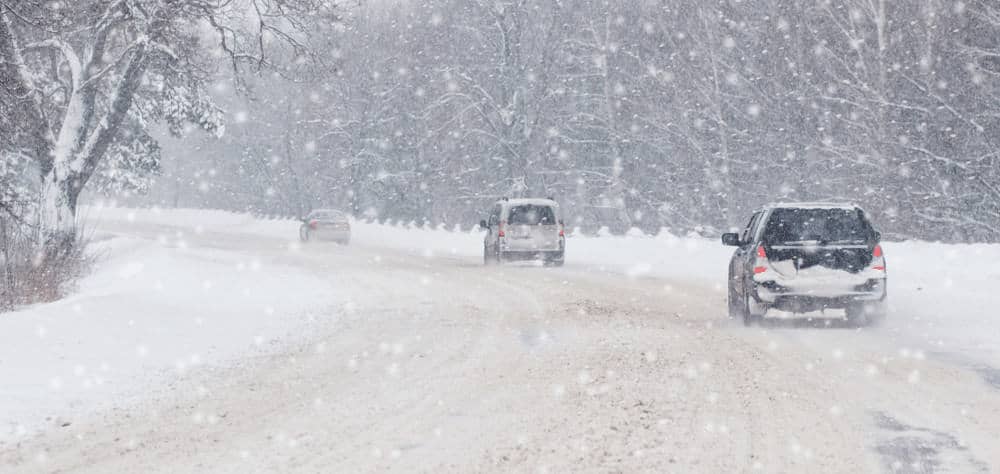Natural disasters involving severe weather can be some of the most dangerous. For this reason, during some weather emergencies, local authorities may advise you and your family to “shelter in place.” The term “shelter in place” simply means that you should take shelter immediately wherever you happen to be.
To weather any storm wherever you are, you should always have an emergency kit that includes certain vital survival gear. Either keep your survival items in a rolling duffel bag so that you can take it with you wherever you go or keep a survival kit in the car and stash an emergency stockpile of necessary items at home. If you can remember to take it with you whenever you leave the house, the rolling duffel bag makes transporting your gear easier.
Remain Vigilant and Prepare Ahead of Time
Find out how your community alerts people during emergencies. There may be warning signals of some kind. The locality most likely provides directions over specific television and radio stations. Always listen to the instructions that they give you, such as whether to remain inside or evacuate and the precautions to take to keep contaminants from entering your residence.
Involve all family members when preparing a shelter-in-place plan. Performing household drills is an excellent way to prepare. During this process, find out about the emergency and shelter-in-place plans of your child’s school and incorporate those into your practice drills.
Pick a room that your family can shelter in. An excellent choice is a room that has no doors or windows or as few as possible. Pick one that connects to a bathroom if possible. You should plan for your pets to be in the bathroom as well.
Take immediate action if you’re advised to shelter in place. Make sure that all of your family members and pets are inside, and then close and secure all doors and windows. Turn off the fans, heating, and cooling systems, if necessary.
Learn about your work’s shelter in place plans if they have one. You may suggest creating one if there is no active plan. If you happen to be driving when you receive instructions to seek shelter, immediately drive to the safest place, such as work, home, or a public building.
If your children are in school, don’t attempt to leave your house and pick them up. School administrators will make sure that they are safe.
At a bare minimum, here are some supplies that should be in your emergency stockpiles:
- 3-day water supply
- Pet supplies
- Non-perishable food (MREs, canned goods, freeze-dried meals, etc.)
- Flashlight
- Batteries
- First aid kit
- Hand-crank or battery-operated radio
- Telephone
- Duct tape
- Towels
- Scissors
- Plastic sheeting (to seal vents, doors, electrical outlets, and windows)
The American Public Health Association has free information available on their website to help you prepare for just about any emergency.
Also Read: The Importance of Shelter in Survival
Severe Weather Emergencies

There are serious weather conditions that may require you to shelter in at home. Some are seasonal, while others can happen at any time. Here are a few examples:
Tornadoes
Every state has reported tornadoes, but they occur more frequently in Kansas, Colorado, Iowa, Illinois, Missouri, Minnesota, Oklahoma, Texas, and Nebraska. Most tornadoes happen in June, but they can occur at any time.
Like any other shelter-in-place emergency, be sure to create a plan and practice it. For in-depth information, see the ready.gov website.
Know the difference between a tornado watch and warning. A tornado watch means that the risk of an occurrence has increased but where and when it will happen is uncertain. You should begin to set your emergency plan in motion. A tornado warning signifies that a tornado is likely to occur soon and that you need to activate your emergency plan right away.
The warning signs of a tornado include:
- Dark, large clouds that gather low
- Dark and greenish sky
- A thunderous roar, similar to a freight train
- Large hail
- Intense winds over 200 mph
- A funnel appearance
Hurricanes
Hurricanes are immense storm systems that move inland after forming over warm sea water. Threats from hurricanes include:
- Heavy rainfall
- Strong winds
- Tornadoes
- Storm surges
- Inland and coastal flooding
- Landslides
- Rip currents
The hurricane season differs slightly for the east and west coast. For the Pacific Ocean, the season is from May 15 to November 30, and for the Atlantic Ocean, it’s from June 1 to November 30. Hurricanes are most active in September and can happen along any of the United States coastal areas or territories in the Pacific or Atlantic Oceans. These storms can affect places as far as 100 miles inland from the coast.
For more information on hurricane preparedness, checkout ready.gov
Winter Storms
The Red Cross reports that fires resulting from improper heater use, vehicle accidents on snowy and icy roads, and cold exposure kill hundreds of people in America every year. A shelter-in-place plan for your car and home are necessary.
Just like other warnings, a winter storm warning means that severe winter storm conditions have already started and a storm will occur in the next 24 hours. A blizzard warning means that there are 35 mph wind gusts or more and blowing or considerable amounts of snow that severely reduce visibility. The conditions can be expected to last for three hours or more.
Make sure to listen to the local radio and TV stations or NOAA radio for updates and plan what you’ll do if you lose heat and power. You may need to report to a local shelter if the conditions are likely to last a long time. Having an alternative heat source such as a coal or wood-burning stove, space heater, or fireplace is a good idea if you live in an area prone to winter storms.
Bring your pets inside and make sure that your livestock and horses are sheltered appropriately and warm. They need access to food and water that isn’t frozen.
The Red Cross is an excellent source for what to do in snowstorms and blizzards. Their website also has information on how to prepare and survive other severe weather conditions.
Also Read: How to Build a Permanent Shelter in the Wilderness

Remember, no matter what the season, you need a plan to shelter in place. It’s imperative that you have the right survival gear, whether you are in your car or home. A stockpile of food and water is critical for your survival. The best thing that you can do for the safety of your family during severe weather is to plan and prepare.
Also Read: How Long Do MRE’s Last


